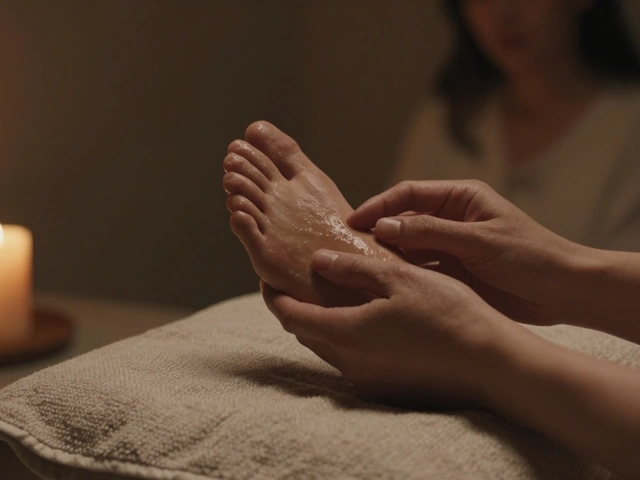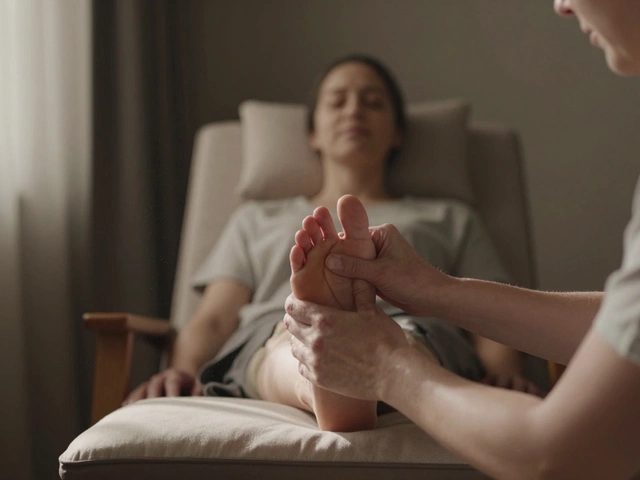Understanding Rolfing Therapy
Rolfing Therapy, often just called Rolfing, is a form of bodywork distinguished by its focus on organizing the body’s connective tissues to release stress and enhance alignment. Developed by Dr. Ida Rolf in the mid-20th century, it delves deep into the body's structure through manipulative and movement techniques. This therapy's primary aim is to help the soft tissues, mostly the myofascial layers, relax, realign, and balance in gravity's line, thus aiding the body to restore its most efficient and energy-conserving form.
Rolfing is unique because it not only looks at symptoms but also seeks the root causes of discomfort and physical limitations. It involves a series of ten sessions, commonly known as 'the ten series,' each focusing on different parts of the body and different dimensions of movement and balance. By doing so, it offers comprehensive benefits from head to toe. Through the manipulation of fascia, practitioners aim to optimize both the expressiveness and efficiency of one's movements, which can lead to significant improvements in posture and physical capabilities.
The benefits of Rolfing range extensively from heightened athletic performance and post-surgery recovery to general health and well-being improvements. It is particularly renowned for its ability to decrease or entirely eliminate chronic pain conditions such as back pain, neck strain, and repetitive stress injuries. Those who have undergone Rolfing often report not only physical changes but emotional transformations, as the body's posture aligns with gravity and induces a state of natural balance.
The methodology behind Rolfing may sound complex, but its execution by trained practitioners offers a gentle and subtle healing experience. It focuses not on reaching into the depths with strength but with precision, supporting the body to assume its optimal structure. Each session, typically lasting between 60 and 90 minutes, is characterized by both passive movements affected by the practitioner and active motions performed by the client, making the process collaborative.
Moreover, Rolfing has begun to gain attention in scientific circles for its potential to improve neural health. Many practitioners report an increase in somatic awareness among their clients, which is the perception of the body's internal state, potentially leading to better cognitive functions. This is due to the understanding that bodily postures and alignments influence not only physical health but also mental processes and emotional stability.
Real-Life Impacts of Rolfing Therapy
The tangible benefits of Rolfing are as varied as the individuals who experience them. From office workers relieved from the burdens of daily stress to athletes seeking performance enhancement, the stories of transformation are many. One significant anecdote involves a woman in her forties who suffered from chronic shoulder pain without finding relief through conventional treatments. After a complete 'ten series' of Rolfing, she reported not only a dramatic reduction in pain but also an improved ability to engage in physical activities which was previously hindered.
Transformations are not always purely physical. Another case tells of a professional musician who found the physical demands of his career leading to tension and pain which in turn affected his performance and emotional health. After undertaking Rolfing, he noticed a considerable ease in playing his instrument and reported a better focus during performances, showcasing Rolfing’s impact not just on the physical but also on mental faculties.
Research on Rolfing, though limited, offers promise. Several studies have underscored its efficacy in realigning the body, reducing discomfort, and enhancing general physiological functions. It has shown potential in increasing flexibility, decreasing pain perception, and even improving lung capacity. These benefits, framed within the personal narratives of those who've experienced them, make a compelling argument for Rolfing’s holistic approach to body wellness.
Choosing to explore Rolfing isn’t just about treating a sore spot or an aching back; it’s about embracing a philosophy of health that involves active participation and recognition of the body's potent capacity to heal and restore itself. Those interested in Rolfing should approach it as a journey—a commitment to transforming perception and physical presence through gentle yet profoundly effective manipulation and movement education.
In essence, the stories of those transformed by Rolfing offer inspiration and a clear call to anyone feeling disconnected from their bodily wellness. Whether it is to resolve persistent pain, recover from an injury, or simply to enhance overall well-being, Rolfing presents a compelling case for being a worthy pursuit as part of one's health regimen.









